Mehdi Razavi
age ~56
from Houston, TX
- Also known as:
-
- Mendi Razavi
- Mehdi J
- Phone and address:
- 2433 Inwood Dr, Houston, TX 77019
Mehdi Razavi Phones & Addresses
- 2433 Inwood Dr, Houston, TX 77019
- 1301 Richmond Ave APT 316, Houston, TX 77006 • (713)4179161
- Allentown, PA
- Annapolis, MD
- Bethesda, MD
- Rochester, MN
- 1202 S Cedar Crest Blvd, Allentown, PA 18103
Work
-
Company:Hall/Garcia Cardiology Association
-
Address:6624 Fannin St Suite 2480, Houston, TX 77030
Education
-
School / High School:Medical College Of Pennsylvania1995
Medicine Doctors

Dr. Mehdi Razavi - MD (Doctor of Medicine)
view sourceHospitals:
Hall/Garcia Cardiology Association
6624 Fannin St Suite 2480, Houston, TX 77030
Clear Lake Regional Medical Center
500 Medical Center Boulevard, Webster, TX 77598
Memorial Hermann - Texas Medical Center
6411 Fannin Street, Houston, TX 77030
6624 Fannin St Suite 2480, Houston, TX 77030
Clear Lake Regional Medical Center
500 Medical Center Boulevard, Webster, TX 77598
Memorial Hermann - Texas Medical Center
6411 Fannin Street, Houston, TX 77030
Education:
Medical Schools
Medical College Of Pennsylvania
Graduated: 1995
Medical College Of Pennsylvania
Graduated: 1995

Mehdi Razavi
view sourceSpecialties:
Cardiovascular Disease, Clinical Cardiac Electrophysiology
Work:
Hall Garcia Cardiology Associates
6624 Fannin St STE 2480, Houston, TX 77030
(713)5295530 (phone), (713)7911786 (fax)
6624 Fannin St STE 2480, Houston, TX 77030
(713)5295530 (phone), (713)7911786 (fax)
Education:
Medical School
Medical College of Pennsylvania
Graduated: 1995
Medical College of Pennsylvania
Graduated: 1995
Procedures:
Cardioversion
Pacemaker and Defibrillator Procedures
Cardiac Catheterization
Cardiac Stress Test
Continuous EKG
Echocardiogram
Electrocardiogram (EKG or ECG)
Pacemaker and Defibrillator Procedures
Cardiac Catheterization
Cardiac Stress Test
Continuous EKG
Echocardiogram
Electrocardiogram (EKG or ECG)
Conditions:
Atrial Fibrillation and Atrial Flutter
Cardiac Arrhythmia
Cardiomyopathy
Conduction Disorders
Paroxysmal Supreventricular Tachycardia (PSVT)
Cardiac Arrhythmia
Cardiomyopathy
Conduction Disorders
Paroxysmal Supreventricular Tachycardia (PSVT)
Languages:
English
Spanish
Spanish
Description:
Dr. Razavi graduated from the Medical College of Pennsylvania in 1995. He works in Houston, TX and specializes in Cardiovascular Disease and Clinical Cardiac Electrophysiology. Dr. Razavi is affiliated with Baylor St Lukes Medical Center and Select Specialty Hospital Houston Medical Center.

Mehdi M. Razavi
view sourceSpecialties:
Cardiovascular Disease
Work:
Cleveland Clinic
9500 Euclid Ave, Cleveland, OH 44195
(800)2232273 (phone), (216)4450127 (fax)
9500 Euclid Ave, Cleveland, OH 44195
(800)2232273 (phone), (216)4450127 (fax)
Education:
Medical School
Isfahan Univ of Med Sci & Hlth Serv, Fac of Med, Isfahan, Iran
Graduated: 1957
Isfahan Univ of Med Sci & Hlth Serv, Fac of Med, Isfahan, Iran
Graduated: 1957
Conditions:
Aortic Valvular Disease
Atrial Fibrillation and Atrial Flutter
Congenital Anomalies of the Heart
Diabetes Mellitus (DM)
Disorders of Lipoid Metabolism
Atrial Fibrillation and Atrial Flutter
Congenital Anomalies of the Heart
Diabetes Mellitus (DM)
Disorders of Lipoid Metabolism
Languages:
English
Description:
Dr. Razavi graduated from the Isfahan Univ of Med Sci & Hlth Serv, Fac of Med, Isfahan, Iran in 1957. He works in Cleveland, OH and specializes in Cardiovascular Disease. Dr. Razavi is affiliated with Cleveland Clinic.

Mehdi Razavi, Cleveland OH
view sourceSpecialties:
Internal Medicine
Cardiology
Cardiovascular Disease
Clinical Cardiac Electrophysiology
Cardiac Electrophysiology
Pediatric Cardiology
Cardiology
Cardiovascular Disease
Clinical Cardiac Electrophysiology
Cardiac Electrophysiology
Pediatric Cardiology
Work:
Cleveland Clinic
9500 Euclid Ave, Cleveland, OH 44185
Hall-Garcia Cardiology Assoc
6624 Fannin St, Houston, TX 77030
9500 Euclid Ave, Cleveland, OH 44185
Hall-Garcia Cardiology Assoc
6624 Fannin St, Houston, TX 77030
Education:
Isfahan University Of Medical Sciences (1957)

Mehdi Razavi, Houston TX
view sourceSpecialties:
Cardiac Electrophysiologist
Address:
6624 Fannin St, Houston, TX 77030
Education:
Doctor of Medicine
Us Patents
-
Introducer Sheathe With Electrodes
view source -
US Patent:8273023, Sep 25, 2012
-
Filed:Jan 5, 2009
-
Appl. No.:12/348658
-
Inventors:Mehdi Razavi - Houston TX, US
-
Assignee:Texas Heart Institute - Houston TX
-
International Classification:A61B 5/00
A61B 5/04
A61B 5/02 -
US Classification:600371, 600373, 600506
-
Abstract:An apparatus comprises a sheathe for introducing a catheter into a blood vessel, a first electrode provided on the sheathe, a second electrode; and a measuring device to which the first and second electrodes are coupled. The measuring device measures the impedance or conduction velocity between the first electrode on the sheathe and the second electrode.
-
Introducer Sheath With Electrodes
view source -
US Patent:8366615, Feb 5, 2013
-
Filed:Oct 16, 2009
-
Appl. No.:12/581101
-
Inventors:Mehdi Razavi - Houston TX, US
-
Assignee:Texas Heart Institute - Houston TX
-
International Classification:A61B 5/00
A61B 5/04
A61B 5/02 -
US Classification:600371, 600373, 600506
-
Abstract:An apparatus comprises a sheath for introducing a catheter into a blood vessel, at least one electrode provided on the sheath, at least one other electrode; and a measuring device to which at least one pair of electrodes are coupled. The measuring device measures the impedance or conduction velocity between the first electrode on the sheath and the second electrode.
-
Sternal Closure Wire For Sensing And Therapeutic Energy Delivery
view source -
US Patent:8527069, Sep 3, 2013
-
Filed:May 10, 2011
-
Appl. No.:13/104534
-
Inventors:Mehdi Razavi - Houston TX, US
Alan Brewer - Houston TX, US -
Assignee:Texas Heart Institute - Houston TX
-
International Classification:A61N 1/00
A61B 5/04 -
US Classification:607126, 600372, 600509, 607119, 607132
-
Abstract:An embodiment includes a sensor coupled to a sternal closure wire. The sternal closure wire holds two sternum portions of a patient adjacent to one another and the first sensor senses a biological signal of the patient. An embodiment includes a current source coupled to a sternal closure wire. The sternal closure wire holds two sternum portions of a patient adjacent to one another, and the current source delivers an electrical current to the patient via the sternal closure wire. Other embodiments are described herein.
-
Predicting Chronic Optimal A-V Intervals For Biventricular Pacing Via Observed Inter-Atrial Delay
view source -
US Patent:20080027488, Jan 31, 2008
-
Filed:Jul 26, 2006
-
Appl. No.:11/460144
-
Inventors:James A. Coles - Columbia MD, US
Michael R. Ujhelyi - Maple Grove MN, US
Mehdi Razavi - Houston TX, US
Vadim Levin - Harleysville PA, US -
International Classification:A61N 1/05
-
US Classification:607 9
-
Abstract:Herein provided are methods for optimizing the atrio-ventricular (A-V) delay for efficacious delivery of cardiac resynchronization therapy. The A-V delay is set such that pacing-induced left ventricular contraction occurs following completion of left atrial (LA) contraction. This maximizes left ventricular filling (preload) which theoretically results in optimal LV contraction via the Frank-Starling mechanism. In CRT devices, the programmed A-V delay starts with detection of electrical activity in the right atrium (RA). Thus, a major component of the A-V delay is the time required for inter-atrial conduction time (IACT) from the RA to the LA. This IACT can be measured during implantation as the time from the atrial lead stimulation artifact to local electrograms in a coronary sinus (CS) catheter. Assuming that the beginning of LA contraction closely corresponds with the beginning of LA electrical activity, the optimal AV delay should be related to the time between the start of RA electrical activity and the start of LA electrical activity plus the duration of LA atrial contraction. Thus the inventors hypothesized that during atrial pacing the IACT measured at implantation correlated with the echocardiographically defined optimal paced AV delay (PAV).
-
Method And Device For Prevention Of Pneumothorax During Vascular Access
view source -
US Patent:20080109033, May 8, 2008
-
Filed:Oct 30, 2007
-
Appl. No.:11/929244
-
Inventors:Mehdi Razavi - Houston TX, US
-
Assignee:TEXAS HEART INSTITUTE - Houston TX
-
International Classification:A61B 17/03
-
US Classification:606213000
-
Abstract:Methods and devices for prevention of a pneumothorax during vascular access are disclosed herein. The methods utilize a device having a detachable distal portion which serves to block the passageway created after a vascular access procedure. The device may include retention means to secure the device in the passageway. In addition, the methods may make use of tissue adhesives or glues to further ensure sealing of the passage. Furthermore, the disclosed methods and devices may be used to block perforations of blood vessels created during vascular access.
-
Method And Apparatus For Vascular Access
view source -
US Patent:20090112182, Apr 30, 2009
-
Filed:Oct 30, 2008
-
Appl. No.:12/261688
-
Inventors:Mehdi RAZAVI - Houston TX, US
-
Assignee:TEXAS HEART INSTITUTE - Houston TX
-
International Classification:A61M 29/02
-
US Classification:604507, 604104
-
Abstract:A vascular access device comprises a bridge having first and second bores therethrough, a dilator in the first bore, and a needle guide in the second bore. The second bore is at an angle with respect to the first bore such that the needle guide is at the angle with respect to the dilator. The device is useful, for example to achieve dual site entrance to a blood vessel.
-
Catheter With Electrodes For Impedance And/Or Conduction Velocity Measurement
view source -
US Patent:20090177069, Jul 9, 2009
-
Filed:Jan 5, 2009
-
Appl. No.:12/348695
-
Inventors:Mehdi RAZAVI - Houston TX, US
-
International Classification:A61B 5/053
-
US Classification:600371, 600547
-
Abstract:An apparatus comprises a catheter comprising a first electrode. The apparatus also comprises a second electrode electrically attached to a person and coupled to the first electrode via the person's tissue. Logic is coupled to the electrodes and generates an electrical signal that is provided through the electrodes and computes an impedance or conduction velocity associated with the electrodes based on the electrical signal. The logic stores a threshold against which said computed impedance or conduction velocity is compared by said logic
-
Device, System, And Method For A Stress Sensing Medical Needle
view source -
US Patent:20110288405, Nov 24, 2011
-
Filed:Apr 21, 2011
-
Appl. No.:13/091655
-
Inventors:MEHDI RAZAVI - Houston TX, US
Gangbing Song - Pearland TX, US
Alireza Nazeri - Houston TX, US
Siu Chun Michael Ho - Sugor Land TX, US -
International Classification:A61B 6/00
-
US Classification:600424
-
Abstract:In an embodiment, an apparatus comprises a needle (e.g., hypodermic needle or trocar) and sensor (e.g., fiber Braggs grating sensor) coupled to a system to determine (e.g., in real time) stress and/or vibrations encountered by the needle. Consequently, various embodiments may (a) help identify nearby vessels, (b) determine whether the needle penetrated a hollow body structure, and (c) accurately guide needles towards a target structure (e.g., vessel). Other embodiments are described herein.
Name / Title
Company / Classification
Phones & Addresses
DirectorVice-President
HALL - GARCIA CARDIOLOGY ASSOCIATES
6624 Fannin St STE 2480, Houston, TX 77030
Mehdi Razavi MD
Cardiologist · Internist
Cardiologist · Internist
6624 Fannin St, Houston, TX 77030
(713)5295530
(713)5295530
Director
MEDEFIX INC
1400 Mckinney St UNIT 1808, Houston, TX 77010
701 Brazos St, Austin, TX 78701
2433 Inwood Dr, Houston, TX 77019
701 Brazos St, Austin, TX 78701
2433 Inwood Dr, Houston, TX 77019
Director
ANONHX CORPORATION
1400 Mckinney St UNIT 1808, Houston, TX 77010
701 Brazos St, Austin, TX 78701
2433 Inwood, Houston, TX 77019
701 Brazos St, Austin, TX 78701
2433 Inwood, Houston, TX 77019
Managing
Nanolinea, LLC
Managing
RAZAVIM LLC
6624 Fannin St STE 2480 C/O DR MEDHI RAZAVI, Houston, TX 77030
800 Brazos St, Austin, TX 78701
800 Brazos St, Austin, TX 78701
President, Director, Governing Person
Saranas
Medical Devices · Mfg Surgical/Medical Instruments
Medical Devices · Mfg Surgical/Medical Instruments
6500 Main St #1020H, Houston, TX 77030
800 Brazos St STE 400, Austin, TX 78701
2450 Holcombe Blvd STE 8, Houston, TX 77021
2433 Inwood Dr, Houston, TX 77019
800 Brazos St STE 400, Austin, TX 78701
2450 Holcombe Blvd STE 8, Houston, TX 77021
2433 Inwood Dr, Houston, TX 77019
Isbn (Books And Publications)




Philosophy, Religion, and the Question of Intolerance
view sourceAuthor
Mehdi Amin Razavi
ISBN #
0791434478
License Records
Mehdi Razavi
Address:
Allentown, PA 18106
License #:
MD419072 - Expired
Category:
Medicine
Type:
Medical Physician and Surgeon
Resumes

Co-Founder
view sourceLocation:
2433 Inwood Dr, Houston, TX 77019
Industry:
Medical Practice
Work:
Maxwell Biomedical
Co-Founder
Rice University
Adjunct Associate Professor of Biongineering
Baylor College of Medicine
Associate Professor of Medicine
Saranas
Founder and Board Member
Nanolinea
Co-Founder
Co-Founder
Rice University
Adjunct Associate Professor of Biongineering
Baylor College of Medicine
Associate Professor of Medicine
Saranas
Founder and Board Member
Nanolinea
Co-Founder
Education:
Mayo Clinic School of Health Sciences 1995 - 2002
Doctor of Medicine, Doctorates University of Maryland Baltimore County 1991 - 1995
Bachelors, Bachelor of Science, Biology
Doctor of Medicine, Doctorates University of Maryland Baltimore County 1991 - 1995
Bachelors, Bachelor of Science, Biology
Skills:
Clinical Research
Healthcare
Medical Devices
Clinical Trials
Cardiology
Hospitals
Medicine
Surgery
Medical Education
Internal Medicine
Research
Biomedical Engineering
Medical Research
Start Ups
Public Speaking
Healthcare Information Technology
Product Development
Fda
Lifesciences
Clinical Development
Healthcare Information Technology
Cardiac Electrophysiology
Healthcare Management
U.s. Food and Drug Administration
Healthcare
Medical Devices
Clinical Trials
Cardiology
Hospitals
Medicine
Surgery
Medical Education
Internal Medicine
Research
Biomedical Engineering
Medical Research
Start Ups
Public Speaking
Healthcare Information Technology
Product Development
Fda
Lifesciences
Clinical Development
Healthcare Information Technology
Cardiac Electrophysiology
Healthcare Management
U.s. Food and Drug Administration
Languages:
English
Persian
Persian

Mehdi Razavi
view sourceSkills:
Teaching
Photoshop
Microsoft Office
Microsoft Word
Powerpoint
Research
Microsoft Excel
Windows
Outlook
Photoshop
Microsoft Office
Microsoft Word
Powerpoint
Research
Microsoft Excel
Windows
Outlook

Mehdi Razavi
view source
Mehdi Razavi
view source
Mehdi Razavi
view source
Mehdi Razavi
view source
Mehdi Razavi
view sourceFriends:
Firouzeh Amini, Majid Razavi, Vahid Razavi, Iman Khatibi, Ali Samavati
Mehdi Razavi . Mehdi Razavi . ...

Mehdi Razavi
view sourceFriends:
Sheyda Naserzadeh, Reza Irani, Francis O'Hare, Hanif Noorbakhsh

Mehdi Razavi
view sourceFriends:
Nebraska Simonson, Christer Johansson, Virag Razavi K. Verbai, Gabriella Bba

Mehdi Razavi
view source
Search Names Mehdi Razavi
view source
Search Names Mehdi Razavi
view sourceClassmates

Lenape High School, Medfo...
view sourceGraduates:
Jarita Bridges (1993-1997),
Sally Conley (1964-1968),
Mehdi Razavi (1994-1998),
Sarah Carter (2000-2003),
Jeff Robbins (1977-1981)
Sally Conley (1964-1968),
Mehdi Razavi (1994-1998),
Sarah Carter (2000-2003),
Jeff Robbins (1977-1981)
Flickr
Googleplus
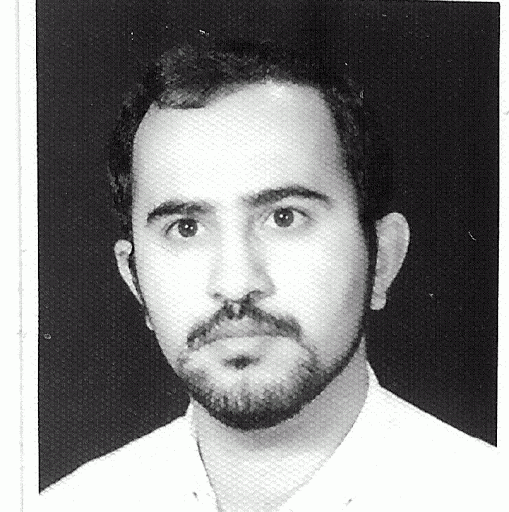
Mehdi Razavi
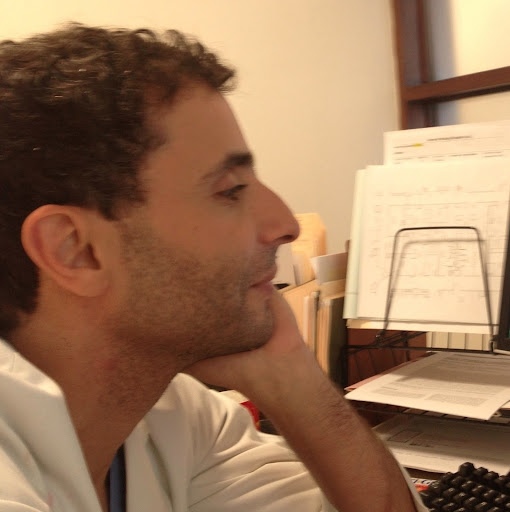
Mehdi Razavi
About:
I'm a cardiologist and researcher in Houston. I enjoy designing medical devices that make our job safer and less complicated.
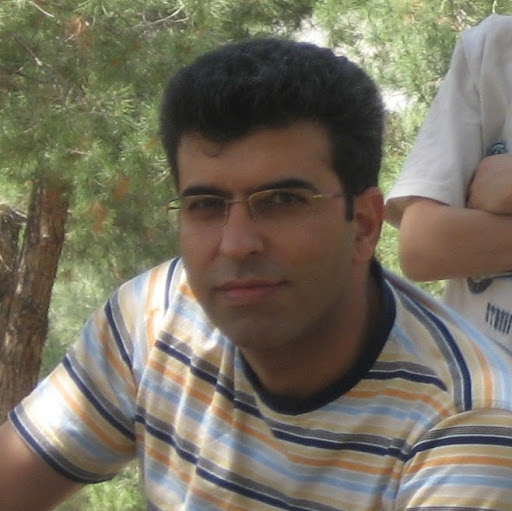
Mehdi Razavi
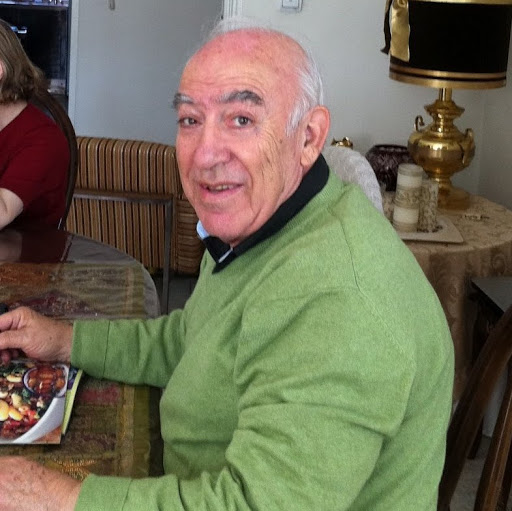
Mehdi Razavi

Mehdi Razavi

Mehdi Razavi
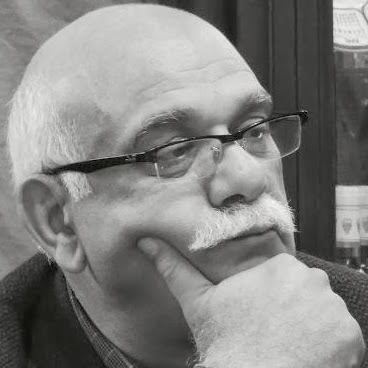
Mehdi Razavi
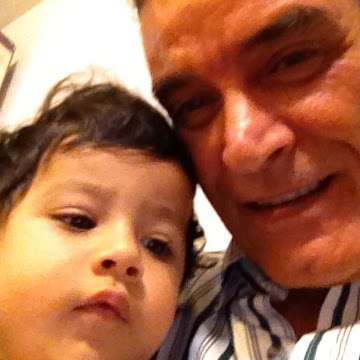
Mehdi Razavi
Youtube
Plaxo

mehdi razavi
view sourceunknown
Get Report for Mehdi Razavi from Houston, TX, age ~56














